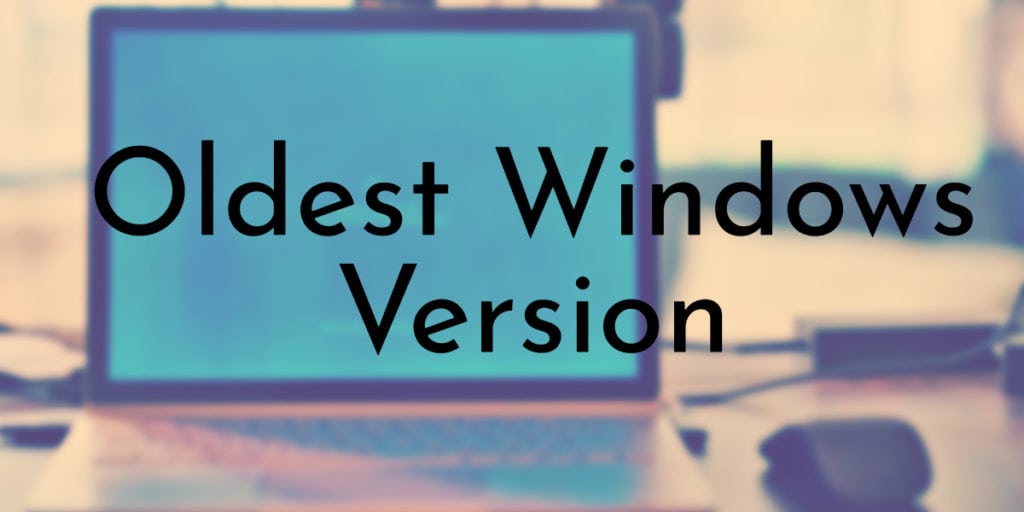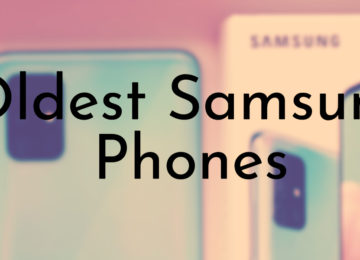While it might seem like Microsoft started strong, as they were the first software company to reach $1 Billion in revenues, the company had its share of mishaps at the beginning of production. Microsoft developed and launched its first operating system named Windows, challenging the existing OS on the market.
Microsoft Windows, also called Windows OS, was developed to run on personal computers, featuring the first graphical user interface (GUI), before the company spread out into different markets and sectors of the computing industry.
Now it’s unimaginable to see a computer booting into another system than Windows OS, but Microsoft had years of experience developing operating systems before reaching success.
While the world is upgrading from Windows 10 to the newest addition Windows 11, it’s always a stellar idea to take a trip down memory lane and explore some of the oldest significant versions of Windows OS over the years.
10. Windows 8
Release Date: October 26, 2012
End of Support: January 12, 2016
Code Name: /
Introduced: Tiled Start Menu, Desktop-Tablet Integration
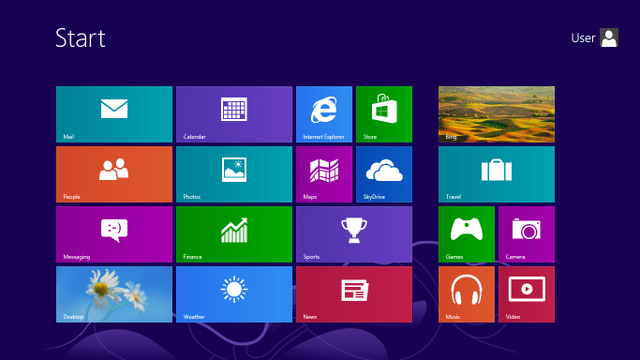
Before the now famous Windows 10, Microsoft had Windows 8 as an upgraded version of the beloved Windows 7. Microsoft changed the Start menu with tiled programs and news and tried to improve the tablet experience, where Windows competed with iOS and Android.
But this decision received backlash from the users because some wanted to use a traditional mouse and keyboard, not a touchscreen which the tablet demanded. This update had good sides, such as a faster speed, universal Windows apps that run in full-screen mode only, and third-party programs.
Did You Know?
Windows 8 was replaced by Windows 8.1, code nicknamed Blue, released in October 2013. Windows 8.1 was launched as a better version of ‘8, respecting the user complaints about the Start screen, letting desktop users boot straight to the desktop mode if they preferred it more.
9. Windows 7
Release Date: October 22, 2009
End of Support: January 14, 2020
Code Name: /
Introduced: Superbar, Virtual Hard Discs, Improved Multi-core/Boot Processors
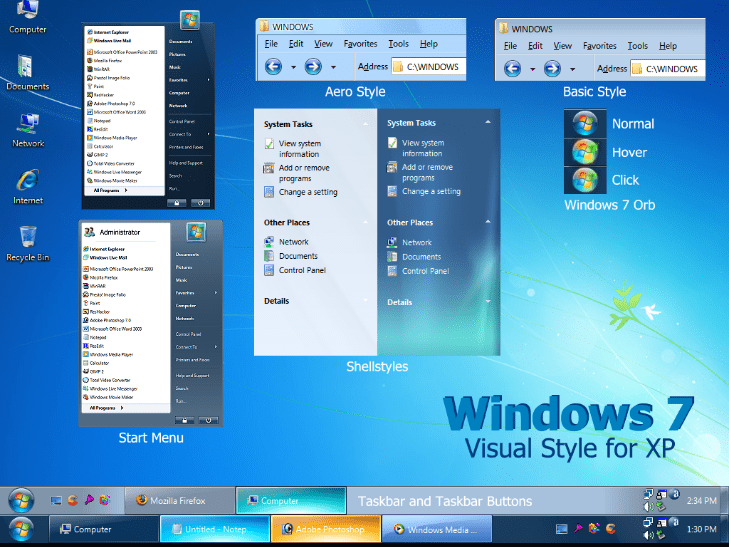
Soon after Windows Vista, the next contender was Windows 7, released in October 2009. Windows 7 was more stable and user-friendly, with a less edgy appearance. Windows 7 intended to fix Vista’s problems, and it did. Most users upgraded from XP to ‘7, forgoing Vista completely.
A new feature, Superbar, was introduced with large glassy icons and more multitasking options.
Windows 7 was a popular system for many years in schools worldwide, even when updated versions were released. Windows 10 replaced Windows 7 as the most popular operating system in January 2018.
Did You Know?
Windows 7 was the best-selling operating system in the world, selling more than 240 million licenses worldwide until Windows 10 was released in July 2015.
8. Windows Vista
Release Date: January 30, 2007
End of Support: April 11, 2017
Code Name: Longhorn
Introduced: Transparent Appearance, Windows Search, Windows DVD Maker
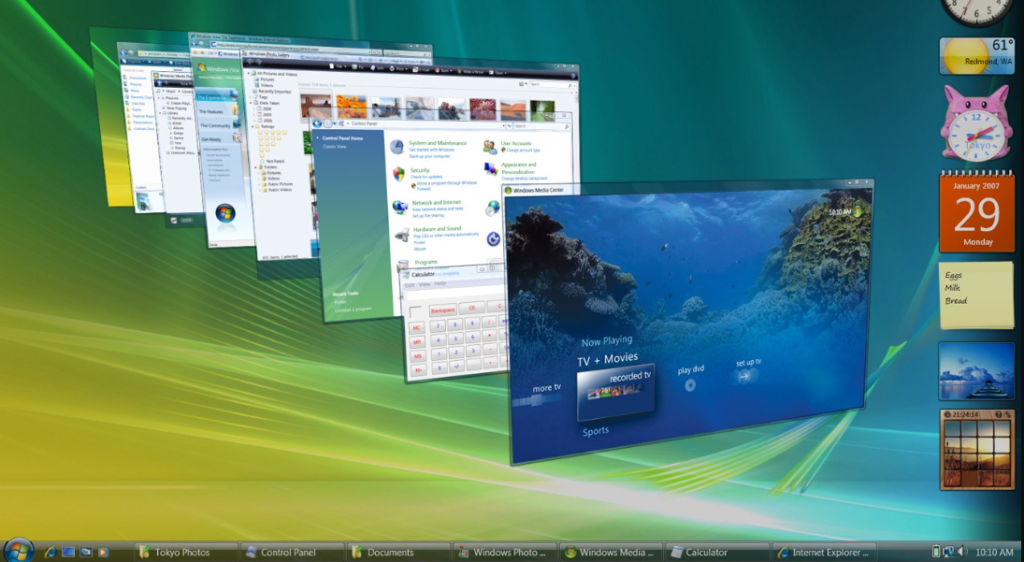
The operating system with the most Editions (until Windows 10 came) was Windows Vista with six different editions: Starter, Home Basic and Premium, Business, Enterprise, and Ultimate. It replaced XP after six years, focusing on transparent elements, and searching for an updated appearance.
But then came trouble because the development was incomplete, and it started receiving user complaints after its general public release. Even with this, Vista added Windows DVD Maker and Search bar to the system and improved program security with over 50 million code lines.
Did You Know?
Improved security meant slower loading since the previous version had around 10 million code lines for security. Microsoft tried to improve the loved XP but failed, as Vista is considered the messiest release of any operating system even today.
7. Windows XP
Release Date: October 25, 2001
End of Support: April 8, 2014
Code Name: Whistler/Freestyle/Harmony/Symphony/Emerald, Anvil
Introduced: Green Start Button, Blue Taskbar, Vista Wallpaper
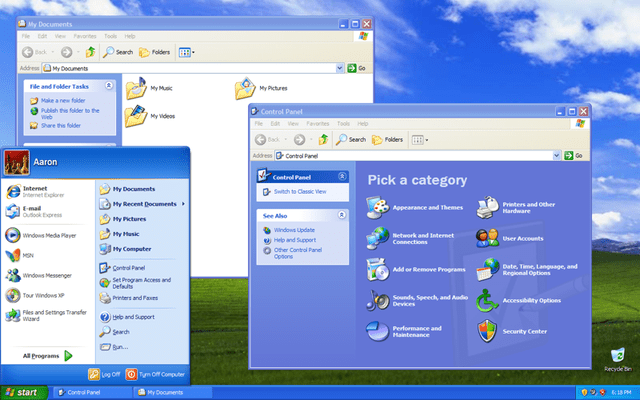
Windows XP is probably the most iconic Microsoft system, with six code names and six different releases, the first, Whistler, in October 2001, and the last, Anvil, in March 2005. It was based on Windows 2000, taking the consumer-friendly elements from its business system.
Windows XP was the longest-running system with support of almost fourteen years. This system brought a familiar green Start button, blue taskbar, and redesigned desktop into the vista wallpaper, still seen today. The one major problem was default turning off the firewall, which created problems with security.
Did You Know?
Windows XP is an abbreviation for “experience,” as Microsoft used previous mistakes and knowledge to create their most recognizable program. There are still over 5,000,000 copies of Windows XP in usage, including most ATMs (automated teller machines), which still run on XP.
6. Windows 2000/ME
Release Date: February 17, 2000
End of Support: July 13, 2010
Code Name: Windows NT 5.0
Introduced: Business-orientated System, Hibernation
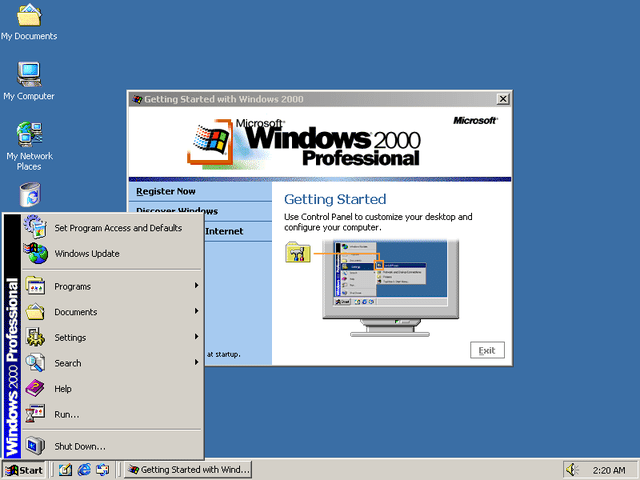
The following system on the list started to get the recognizable appearance of the Windows operating system, being released at the start of a new millennium. Windows 2000 had four editions: Professional, Server, Advanced Serves, and Datacenter Server, targeting different markets.
Windows ME was released in the same year, twinning with ‘2000 with almost identical features. They were the first systems to include hibernation, a more active desktop, and increased language support. Professional package encrypted sensitive data in more secured programs.
Did You Know?
Microsoft promoted Windows 2000 as “the most secure Windows version yet,” but the system was under virus attacks all the time until reaching the end of support in July 2010. Some high-profile viruses were Nimda and Code Red, computer worms that attacked multiple Microsoft servers.
5. Windows 98
Release Date: Jun 25, 1998
End of Support: July 11, 2006
Code Name: Memphis
Introduced: Outlook Express, Windows Address Book, Microsoft Chat
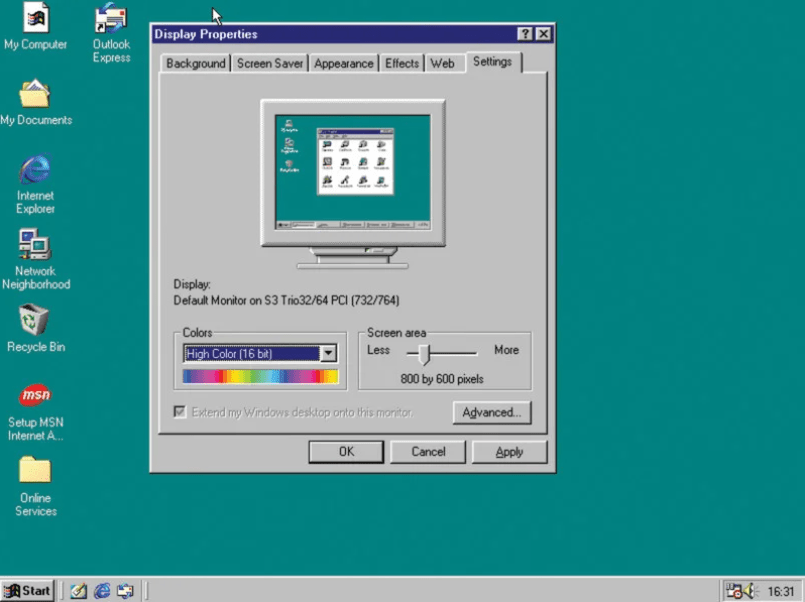
Nothing big changed with Windows 98 compared to its ‘95 predecessor, other than new additions and booting directly into Windows. USB support was better, as well as the addition of a DVD player program. Microsoft focused on fixing performance bugs and improving cosmetics.
Windows 98 wasn’t marketed as improved but rather a glossed version of ‘95. A Second Edition was released in 1999 until the mainstream support ended in July 2006. Outlook Express and the address bar in Windows Explorers were among the most significant additions.
Did You Know?
Microsoft promoted Windows 98 as having great Plug and Play (PnP) or USB support, but the operating system crashed during the promotion when a USB scanner was plugged in, showing a “blue death screen” instead. Bill Gates joked and said, “this is why we’re not shipping ‘98 yet.”
4. Windows 95
Release Date: August 24, 1995
End of Support: December 31, 2001
Code Name: Chicago
Introduced: 32-bit System, Start Button, Taskbar
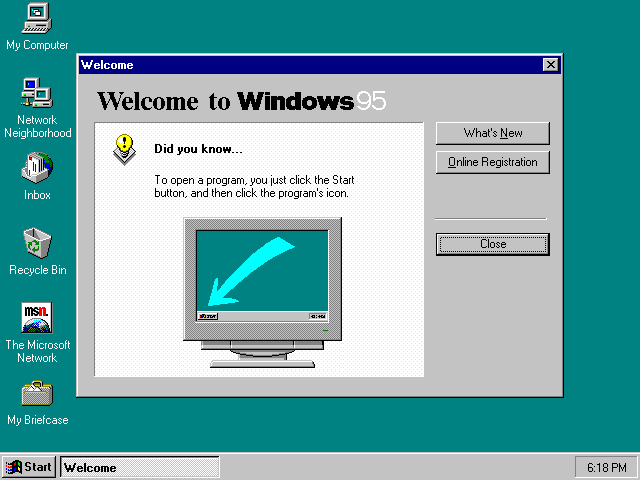
While Windows NT 3.5 dabbled in a 32-bit system, Windows 95 is considered the first significant system from the Windows 9x family to have a 32-bit architecture. This system had redesigned its user interface, adding the Start Menu and Taskbar, gathering the most attention since the original one.
Windows 95 was also the first system to boot the computer directly into Windows, rather than loading in MS-DOS. The ‘95 system had an update a year later in a Windows NT 4.0 version before being replaced in 1998 by Windows 98.
Did You Know?
The taskbar and the start menu changed the game, not only for Microsoft but for all consumer-oriented operating systems. Users could find programs and data through a condensed search for the first time, with additions like the system tray clock and notification area.
3. Window 3
Release Date: May 22, 1990
End of Support: December 31, 2001
Code Name: /
Introduced: Extended Memory, Solitaire
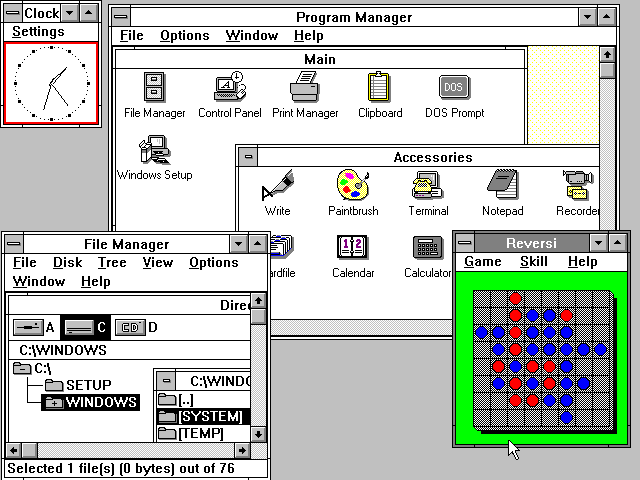
Windows 3.0 was the first version with two Editions: Windows 3.00a and 3.0 with Multimedia Extensions. This version included a new graphical user interface with clickable icons and multimedia support for sound recording and playback. Microsoft started to get its status after this release.
Microsoft had a breakthrough with Windows 3.0, selling 10 million copies in just two years. They were praised for improved multitasking and expanded computer memory, which extended the limited 1MB memory. The card-moving game Solitaire was introduced through this version as well.
Did You Know?
The successor to this version was Windows 3.1, codenamed Janus, introducing the TrueType font system, which competed with Adobe Type Manager created by Adobe Systems. While this system was 16-bit, Windows NT 3.5 made another significant move and switched to 32-bit architecture instead.
2. Windows 2
Release Date: December 9, 1987
End of Support: December 31, 2001
Code Name: /
Introduced: Microsoft Word, Microsoft Excel
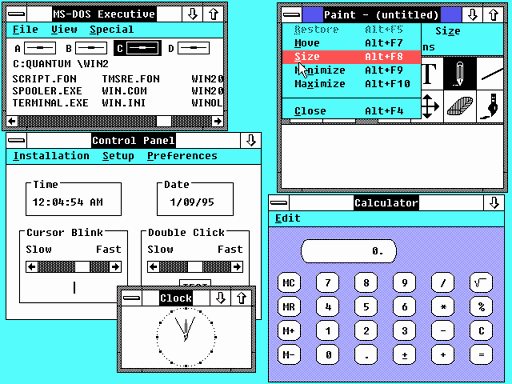
Windows 2.0 is the second major version released by Microsoft in December 1987. Nothing significantly changed from the original Windows version, as the company still worked on perfecting the program. It was the first platform to include overlapping windows, as seen in the picture.
This version had four releases until 1990, when Windows 3.0 came out. Besides overlapping programs, Microsoft introduced desktop icons, keyboard shortcuts, and resizing applications. Microsoft also added Microsoft Word and Excel to this version. The release received better reactions than the first one.
Did You Know?
Apple wasn’t happy about Windows 2 as they prepared a lawsuit instead of a celebration for Microsoft. They thought ‘2 looked similar to Apple’s Macintosh platform (since 1984). The lawsuit was settled in 1994 by ruling that “Apple can’t get patent-like protection of a graphical user interface.”
1. Windows 1
Release Date: November 20, 1985
End of Support: December 31, 2001
Code Name: Interface Manager
Introduced: Calculator, MS Paint, Control Panel
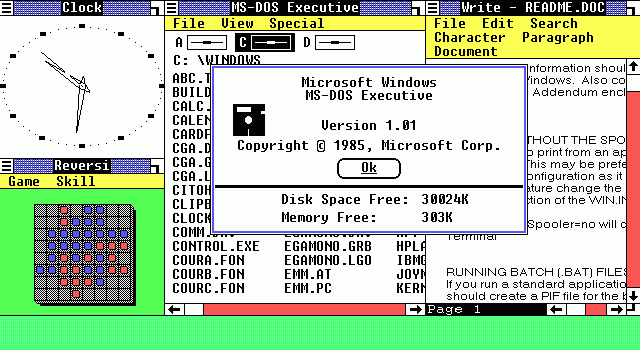
Windows 1.0 is the oldest version of Windows and the first major release of Microsoft. Microsoft announced the first Windows version named Interface Manager in 1983 but changed its name to Windows 1.0 before its launch in November 1985. The following year, this version arrived in the European market.
Bill Gates’ project ran on top of MS-DOS, but it didn’t find success from the start due to other more popular user-friendly interfaces. Even with this, Windows 1.0 had two more releases in 1986 and one in 1987, before Windows 2.0. The original version relied on mouse usage before the mouse was a standard device.
Did You Know?
Windows 1.0 included some programs that remain in use today, such as Calculator, MS Paint, Notepad, Clipboard, and Control Panel. Microsoft created a mock version for the third season of the Netflix show Stranger Things, which takes place in 1985.


